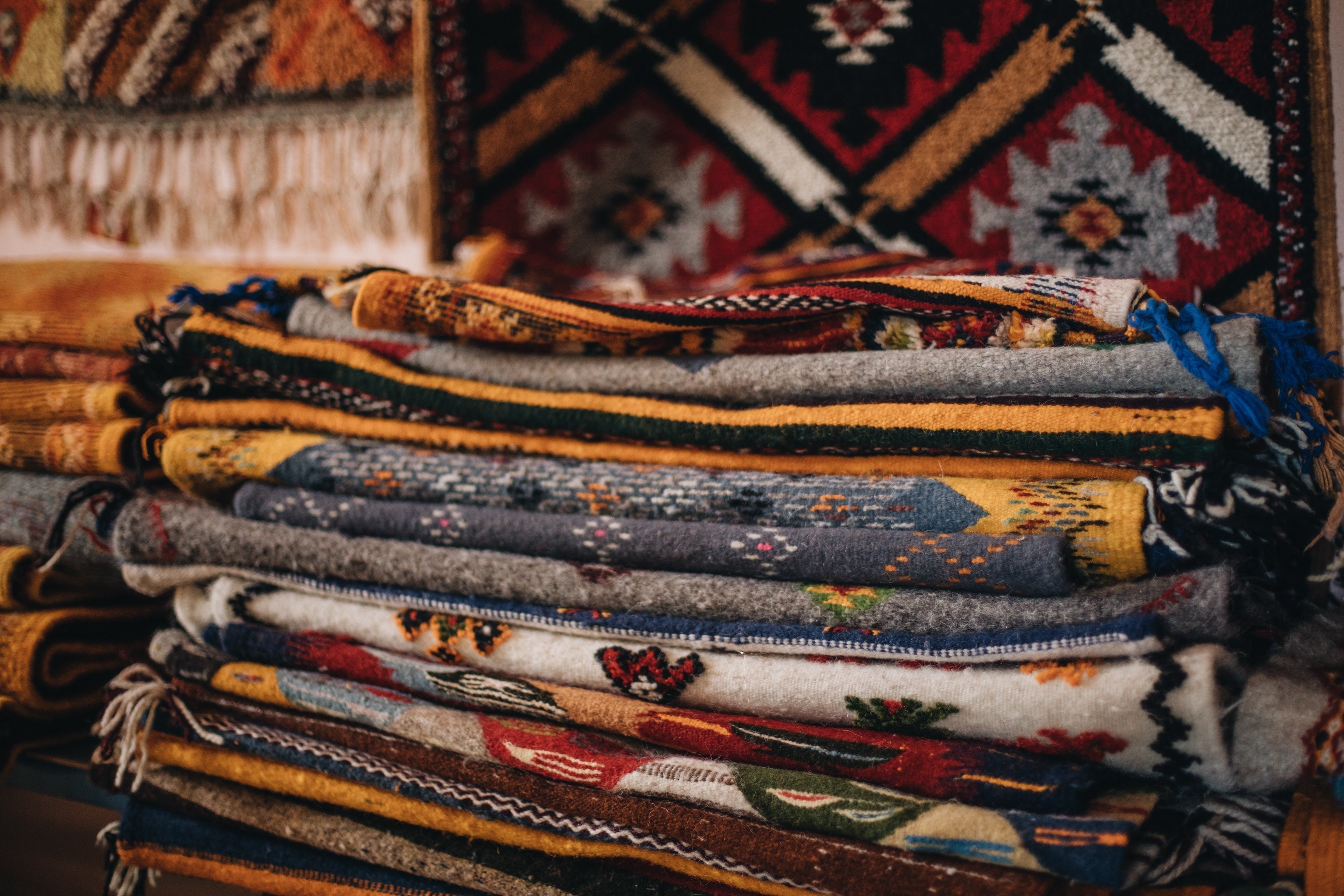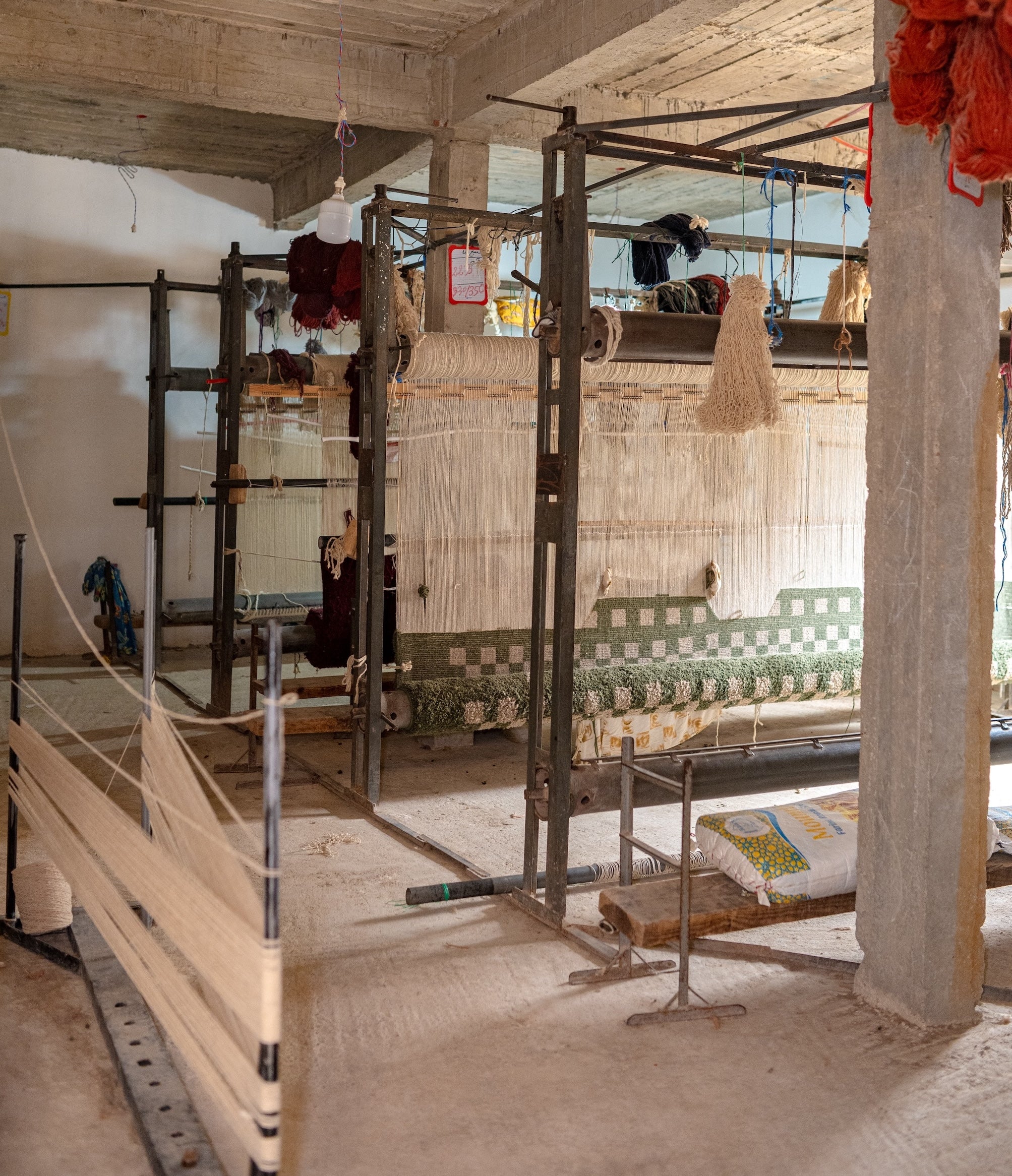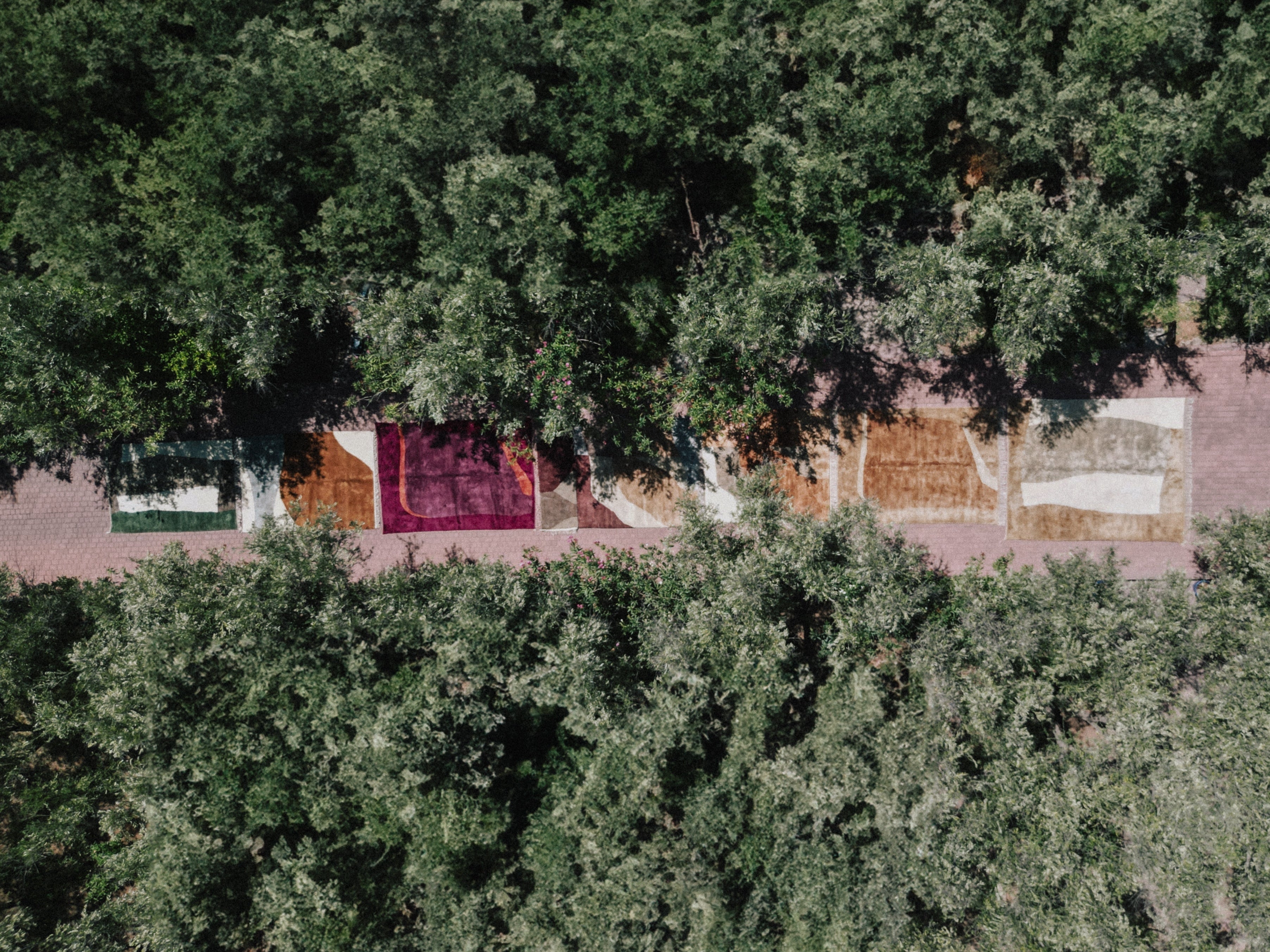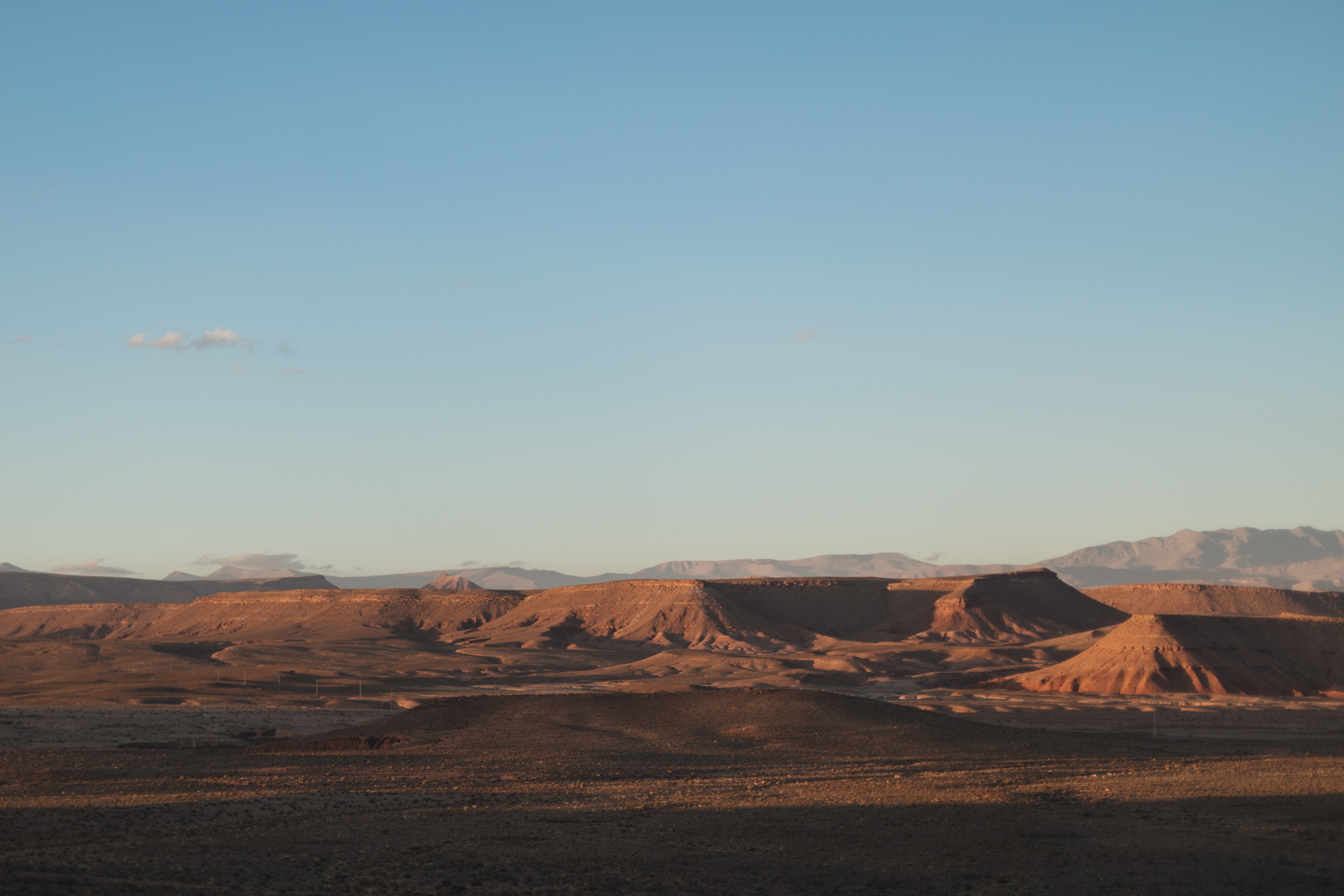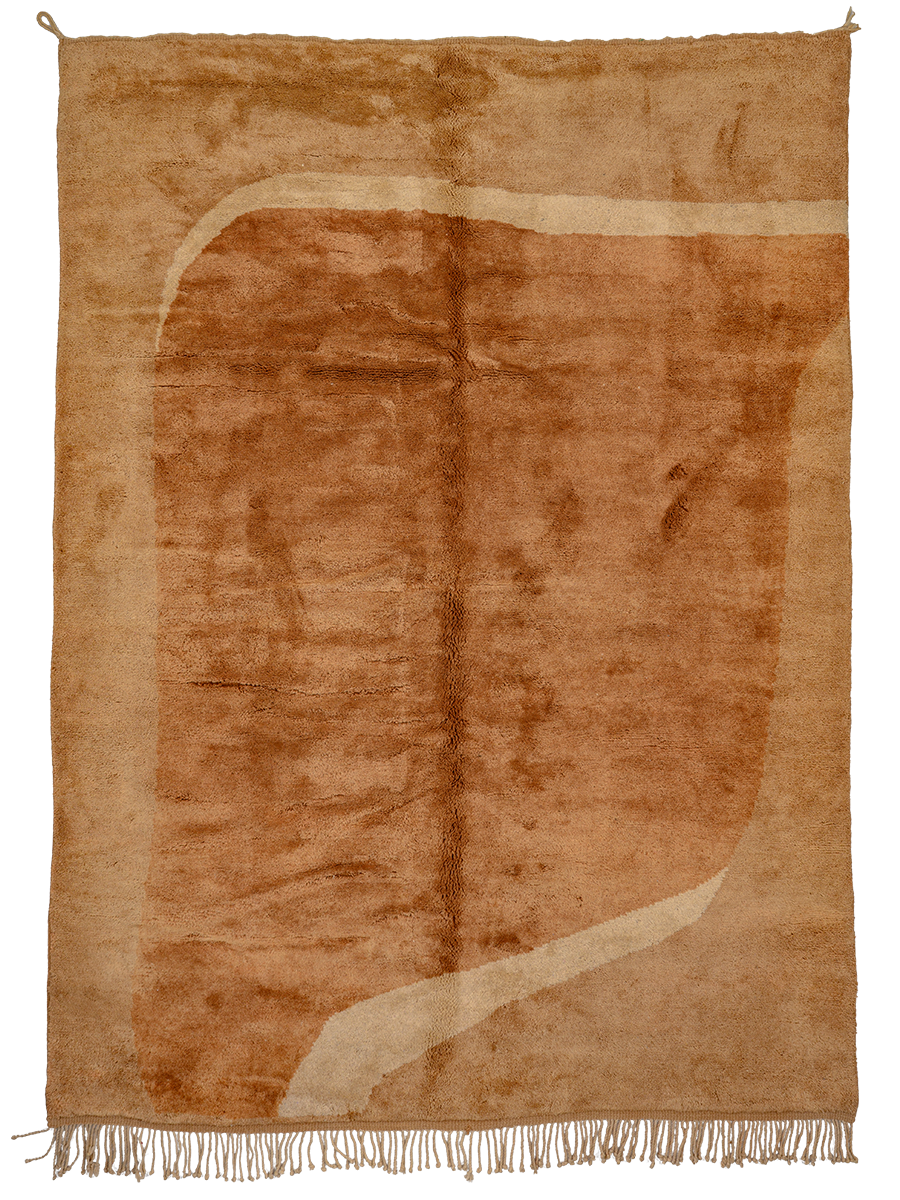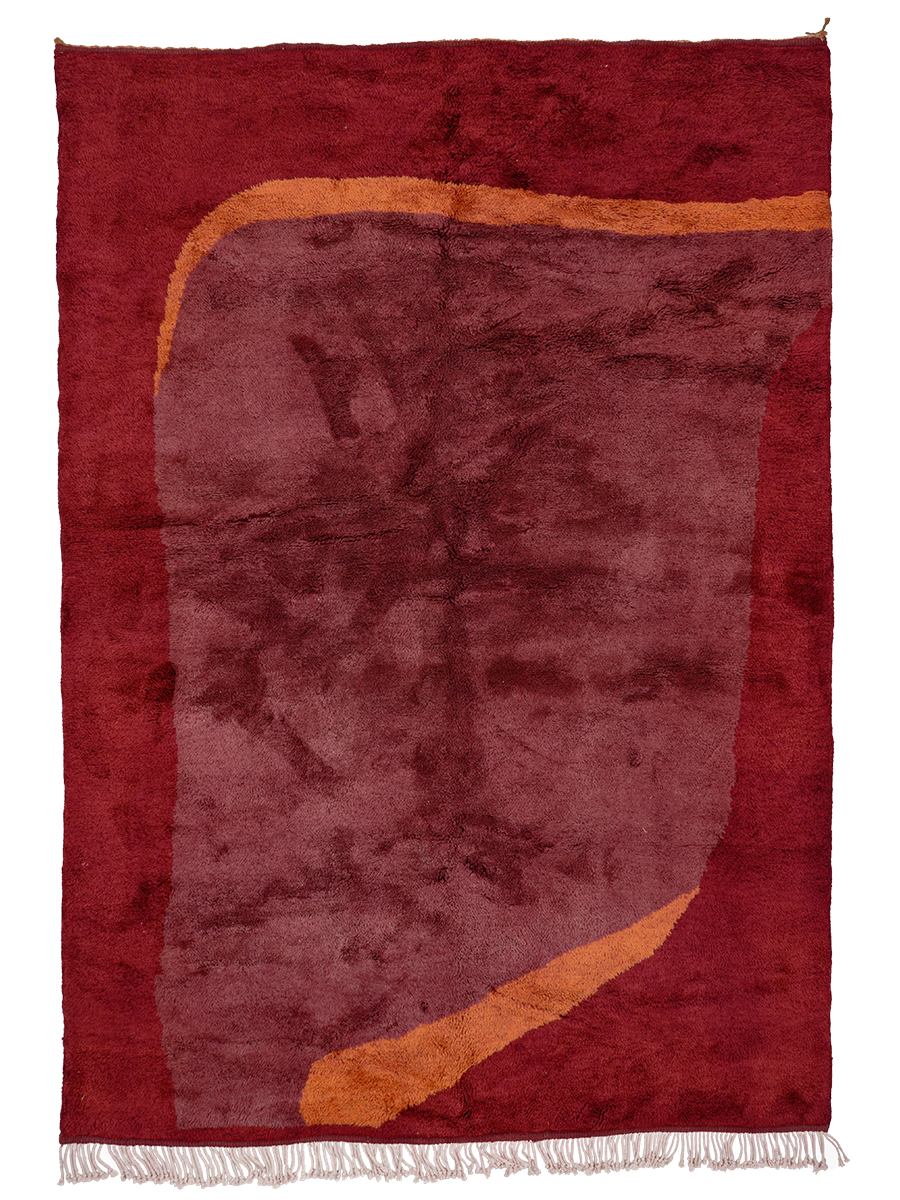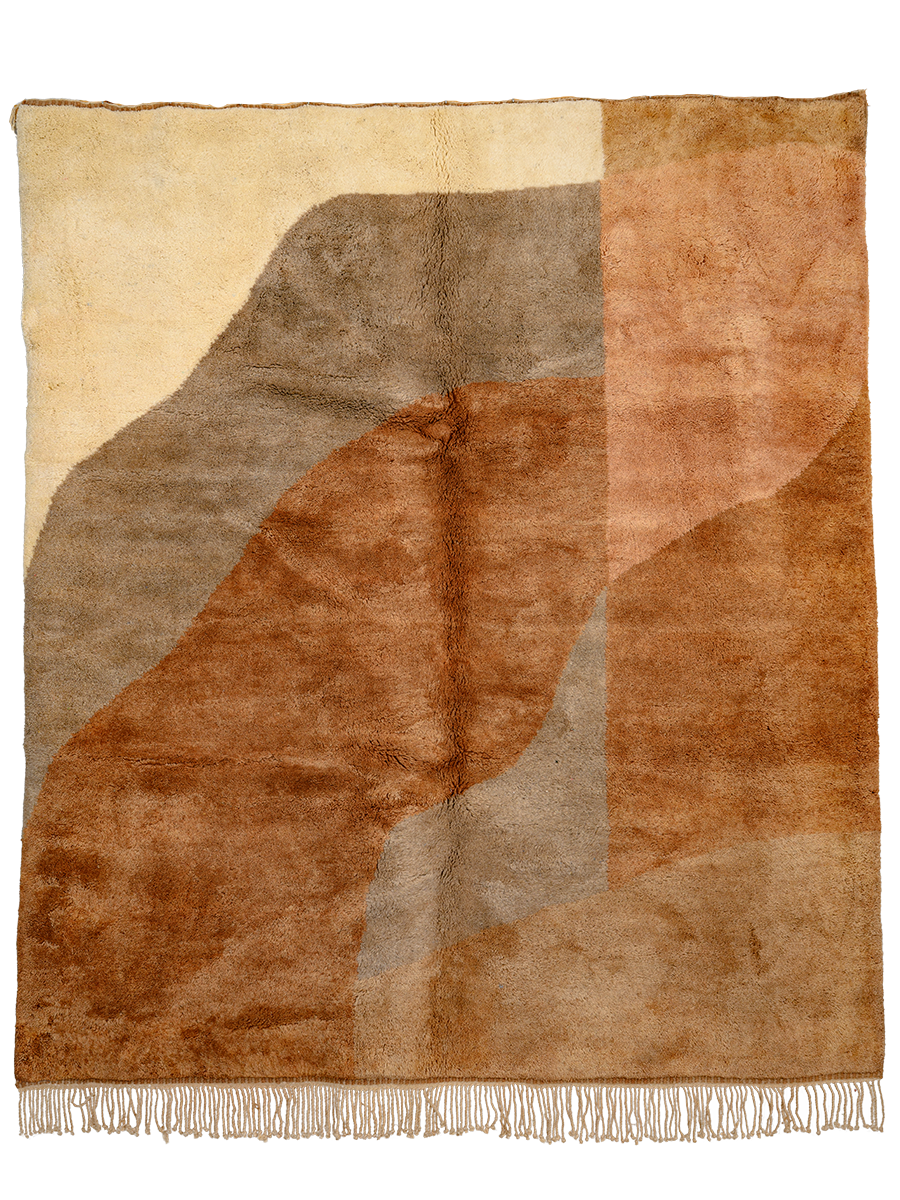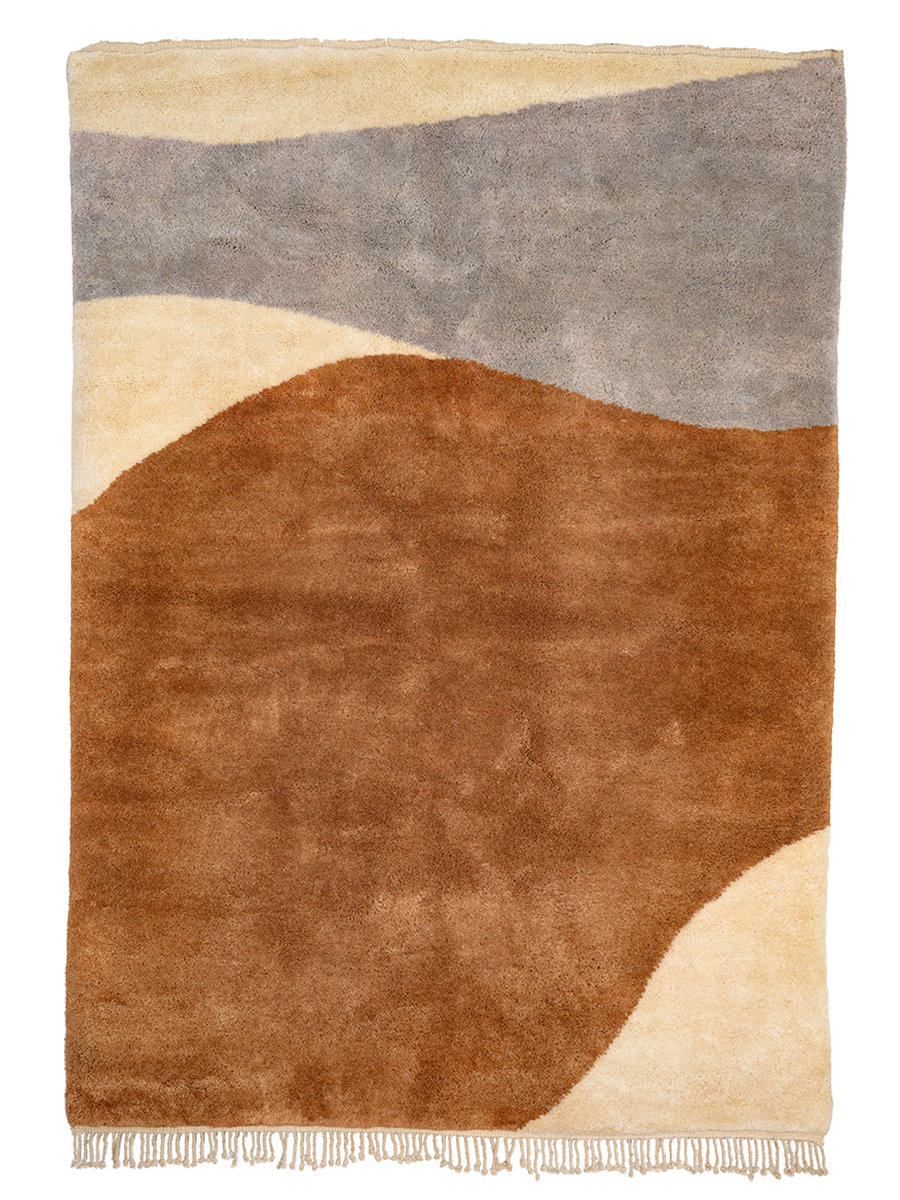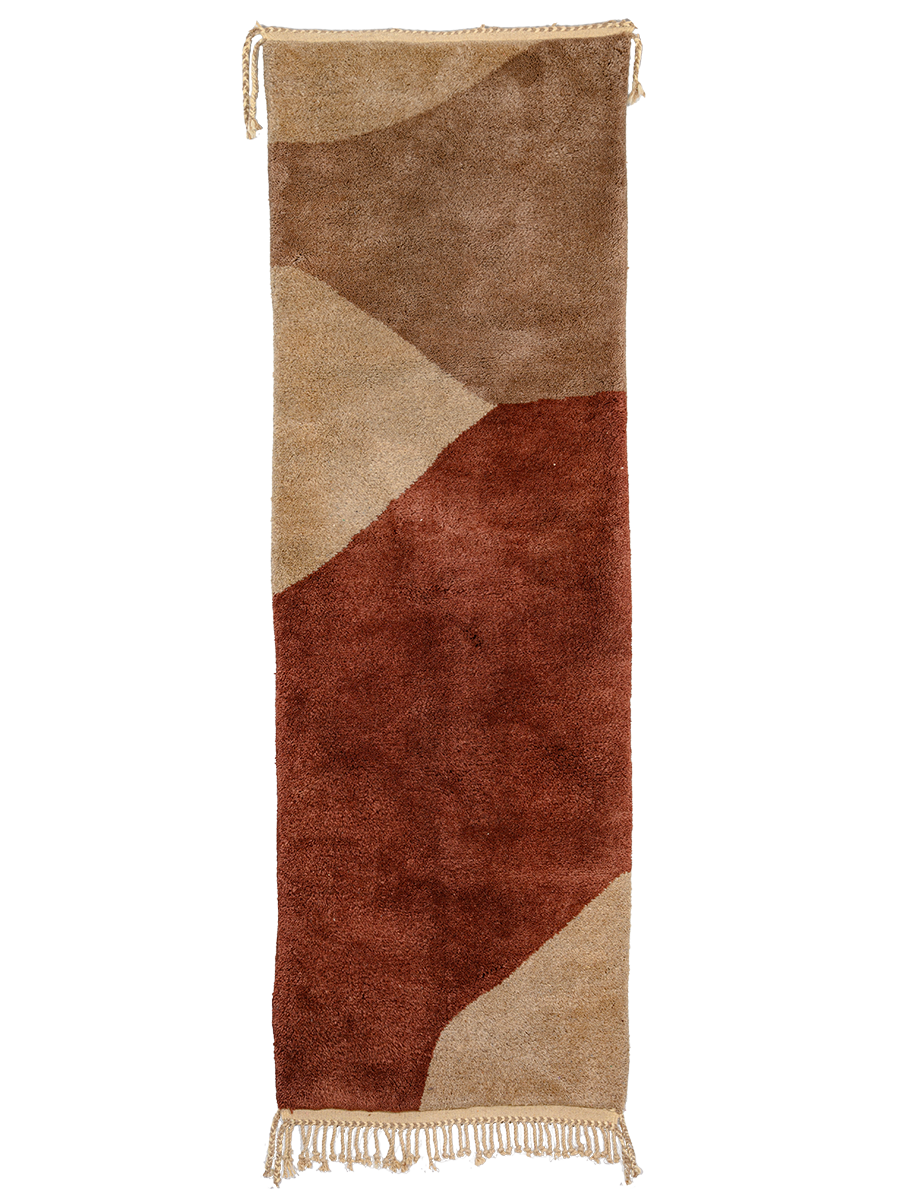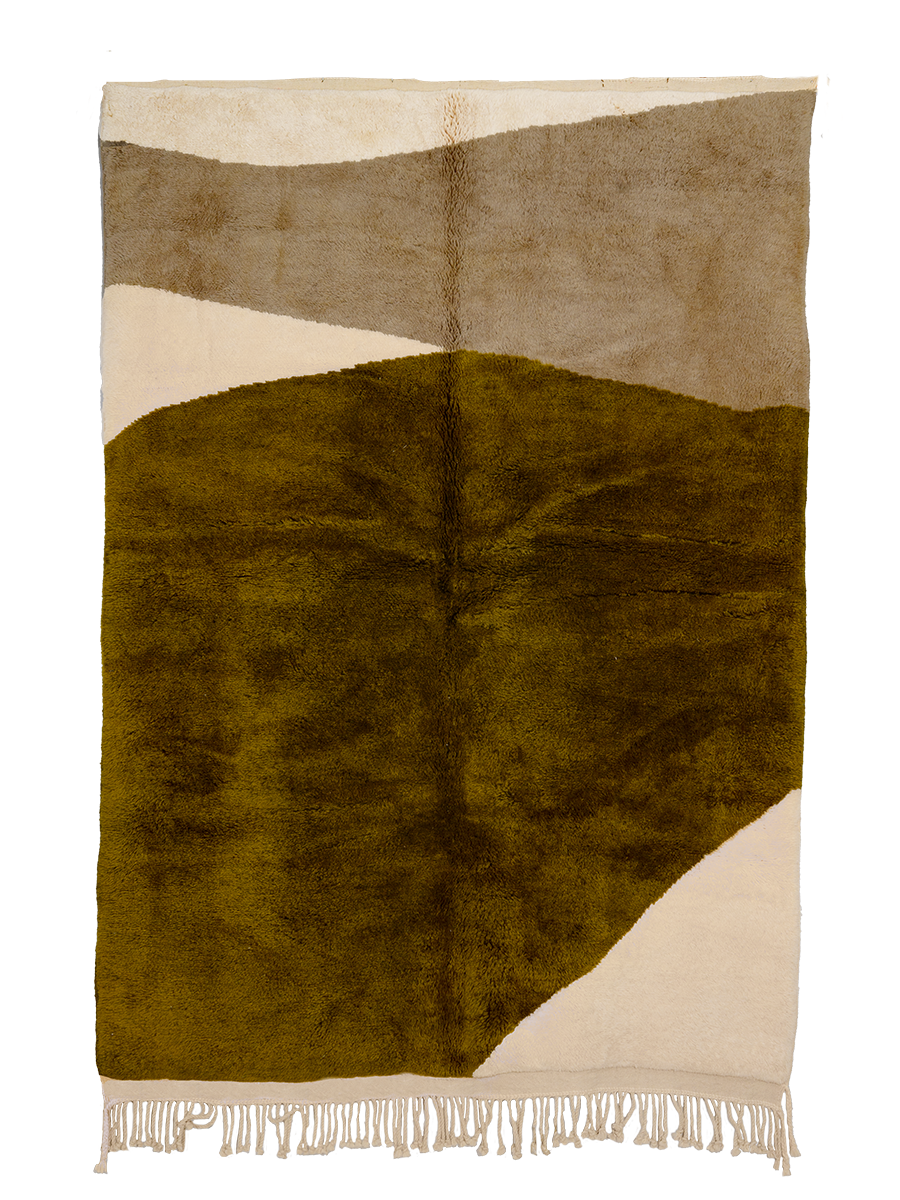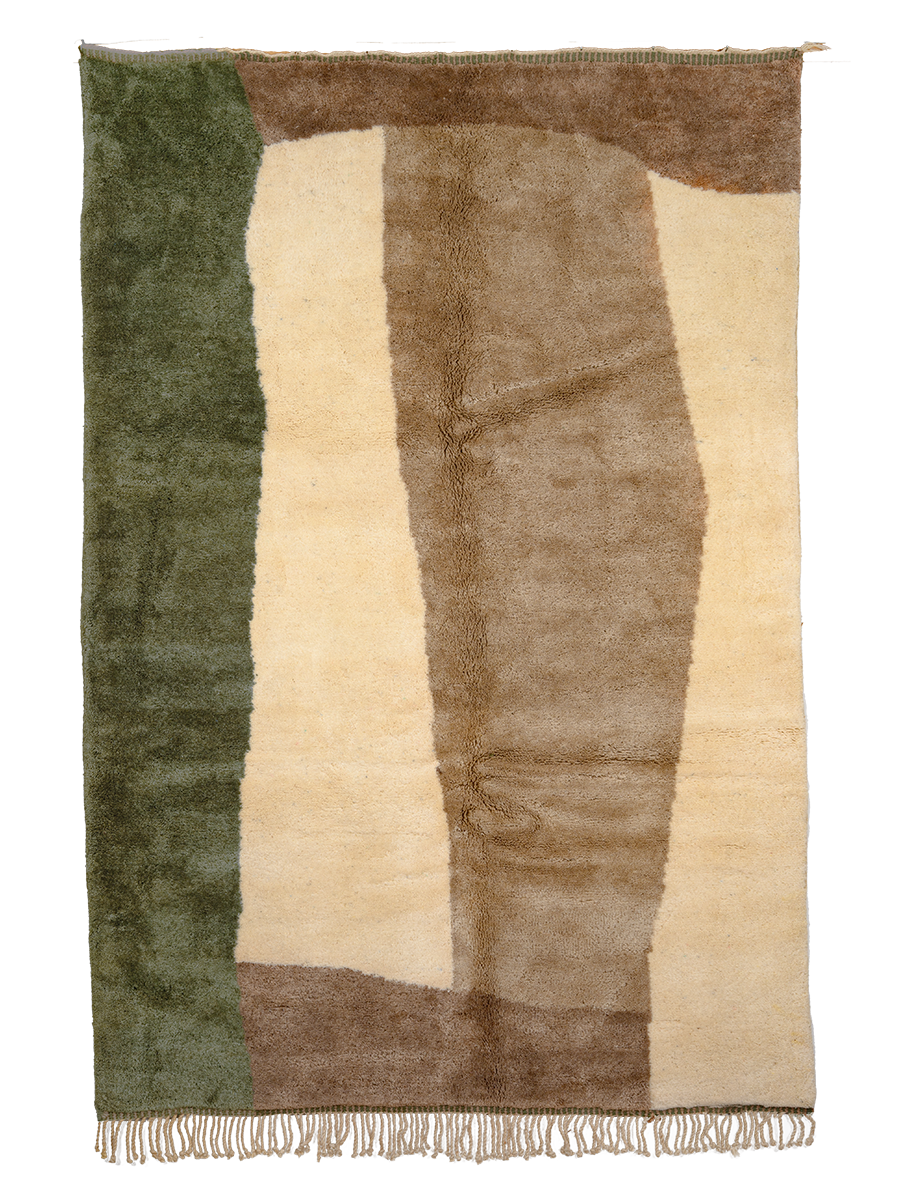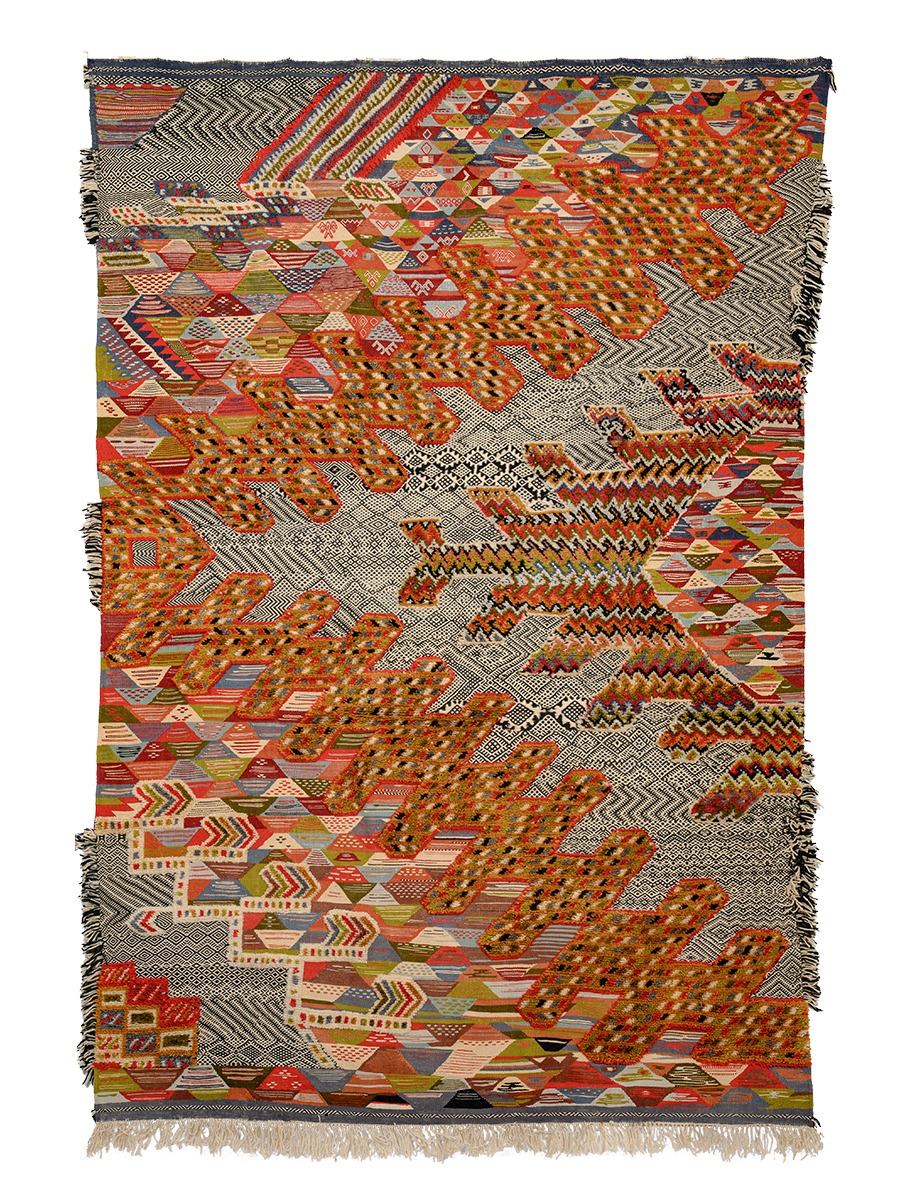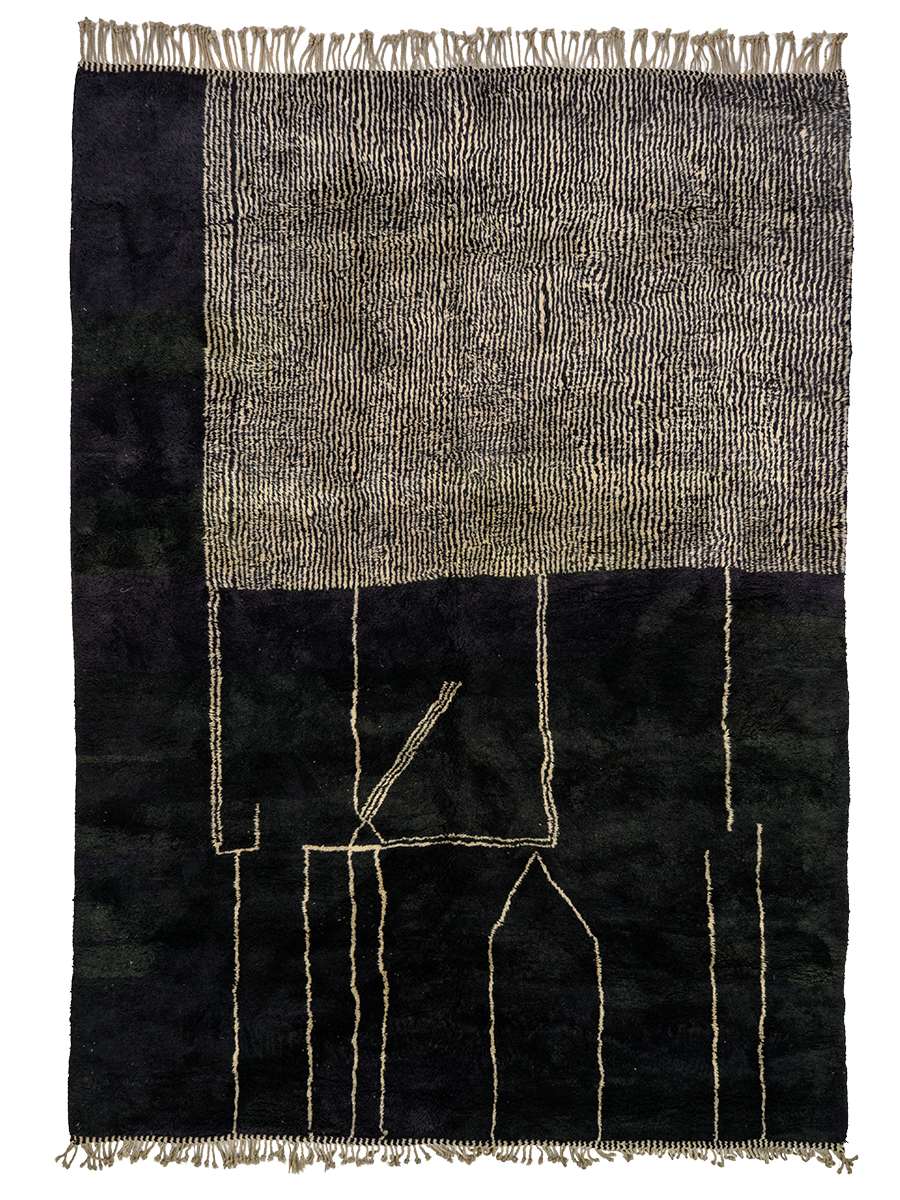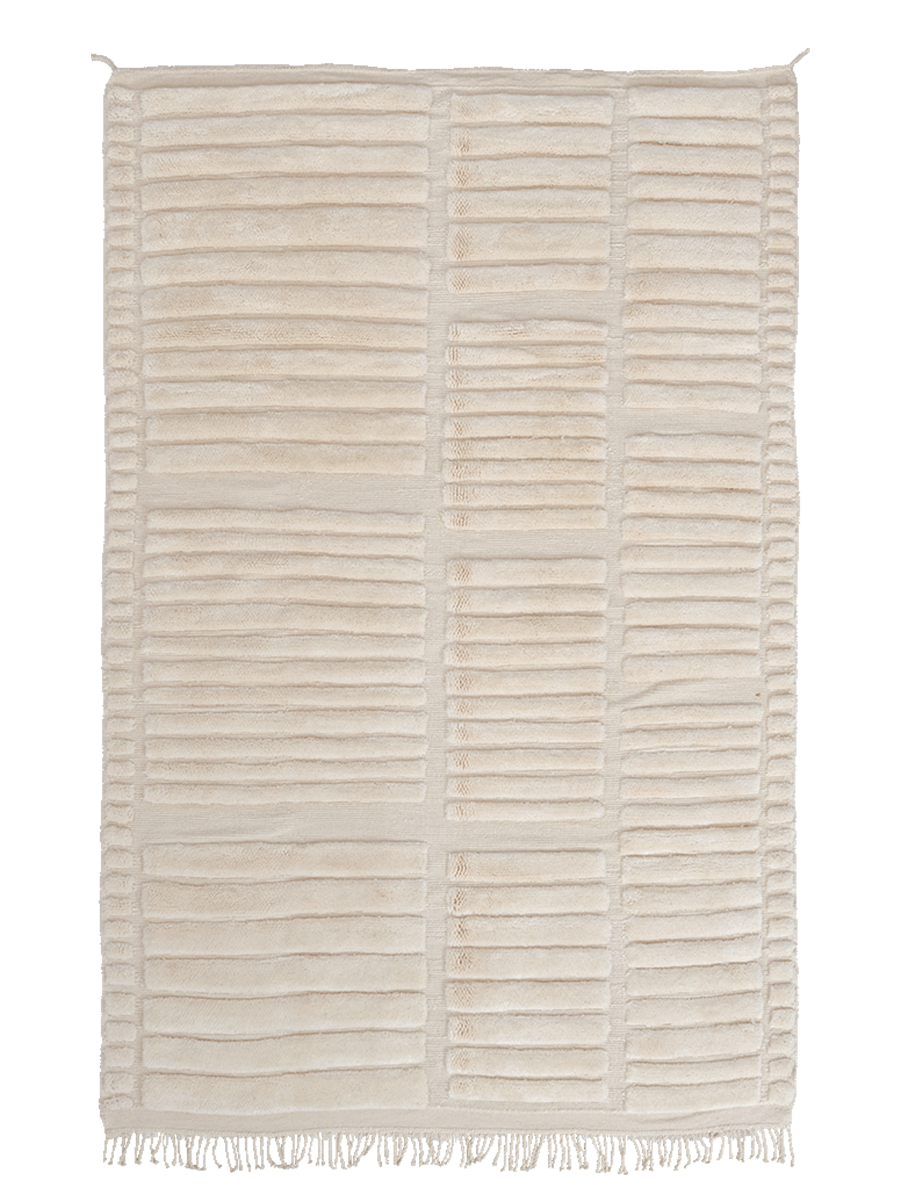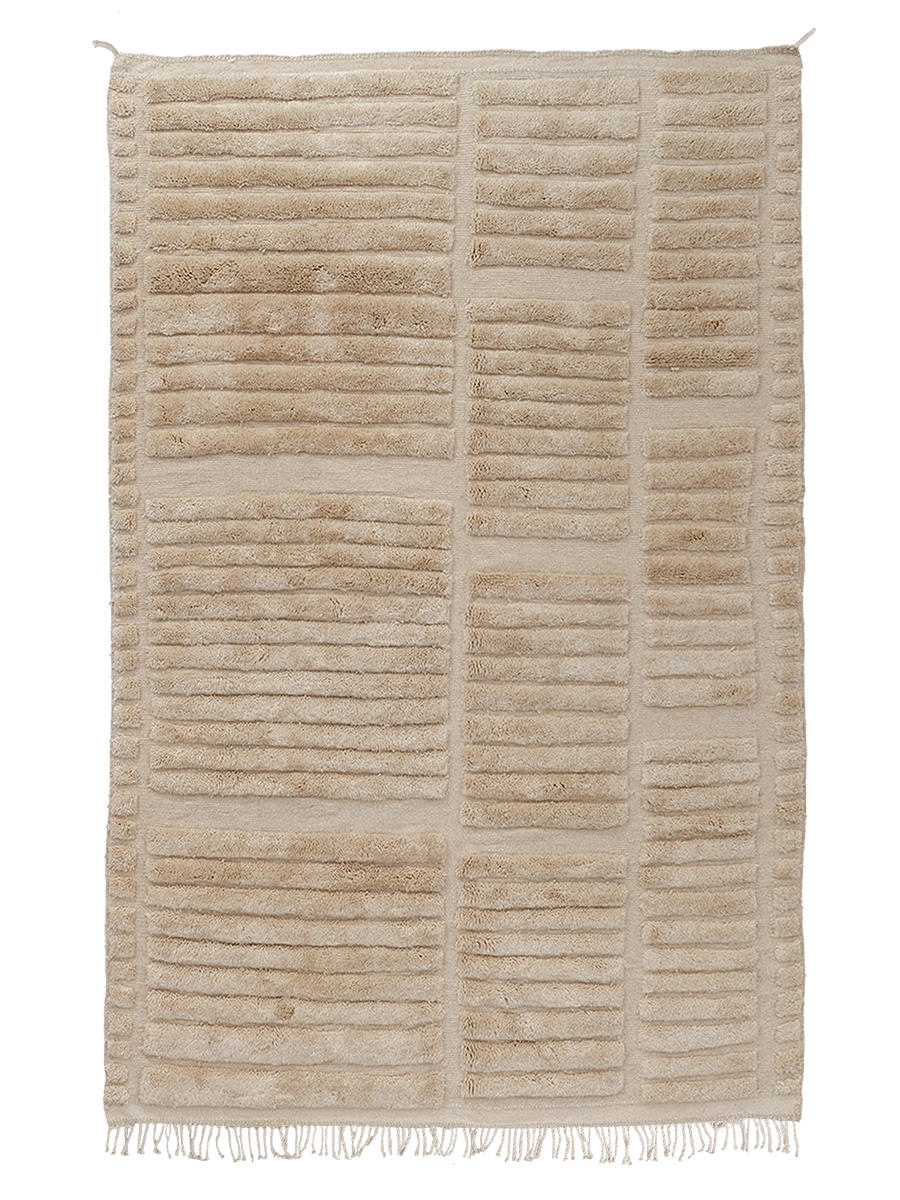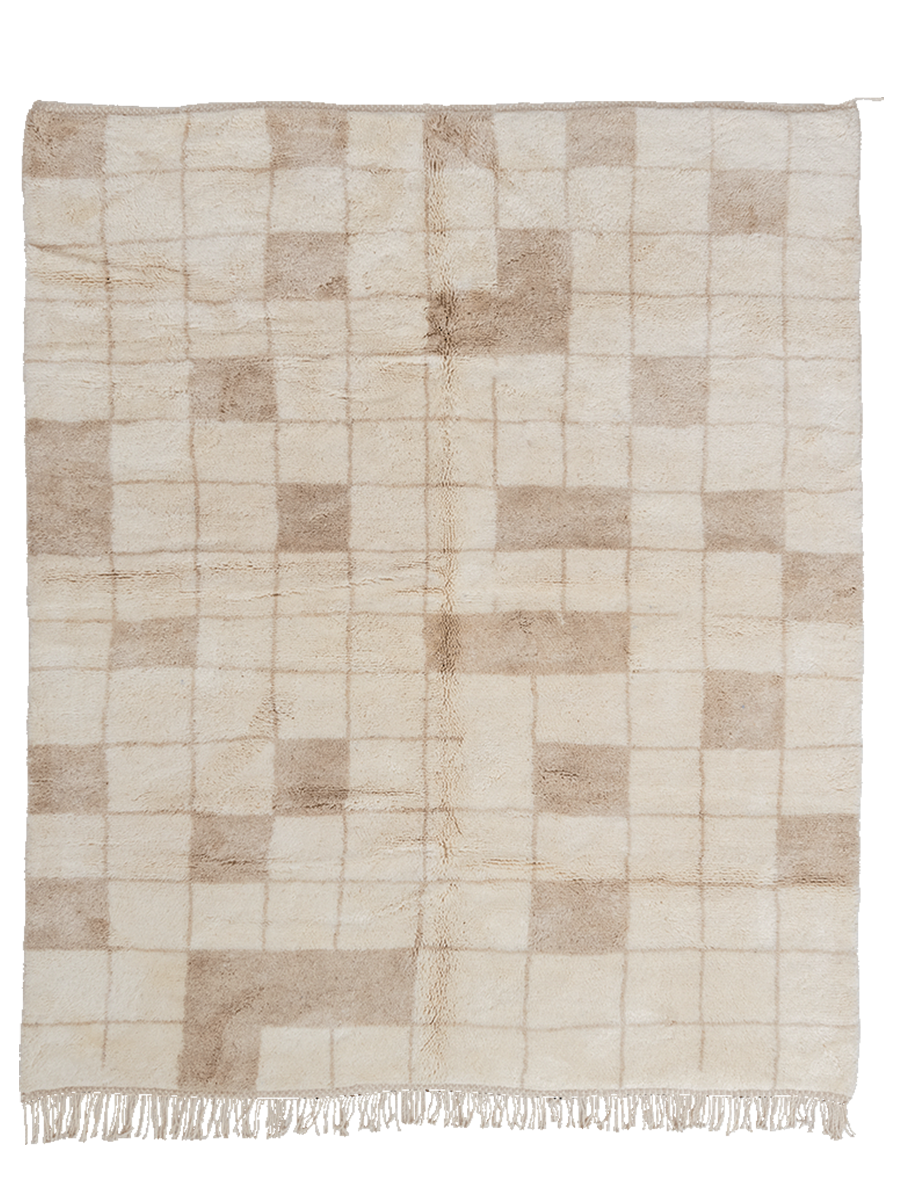Types of Moroccan Rug
“Moroccan Rug” is a catchall term for a vast array of rug types. Weaving techniques vary across tribes, regions, and villages. Since the weaving craft is taught by elders, the style of each tribe or region often reflects the climate, needs, and customs of that particular community. Artisans in the snowy Atlas Mountains specialize in thicker rugs than the artisans who reside in the desert, for example. This variation continues throughout every weave choice—from the animals, the wools are harvested from and the dye ingredients available to the local symbols and traditions.
Here’s our guide to the major styles of Moroccan rug types.
Flatweave
Flatweave rugs are thin, soft, strong, and full of symbolism. They’re also called “hanbel” or “aknif” in Arabic. All of our Flatweave and Hanbel rugs are made in the south of Morocco, which produces the highest quality flatweaves.
Intricate Hanbel
This style is thought to originate from the area in and around the Village of Tazenakht, a region rich with weaving history. While the majority of this weave is flat, the design accents are either embroidered or have a slightly higher pile, giving this piece texture and dimension.
Every design element comes entirely from the artisan’s imagination. The design elements within this technique tend to depict an array of symbolism in the Amazigh culture.
Kilim
The Kilim style originates from the Middle Atlas Mountain region. These rugs carry symbolism unique to the indigenous tribes weaving them. Many Kilim designs are interpretations of a popular window dressing in Moroccan homes. The window dressings are made from intricate latticework and stained glass surrounding oriel (or bay-style) windows. The result is a beautifully ornate exterior that creates shade and privacy while allowing natural light to enter the home. Some Kilim weaves mimic this style with intricate geometric patterns.
Zanafi
The Zanafi weaving technique comes from the High Atlas Mountains.
This technique requires the highest level of skill and concentration. Each row is created with an intricate system of counting. This style is extra special because it's reversible; on each side, the colors of the symbols are inverted.
The Zanafi rug is also known for its side tassels but can be woven without them on request.
While the more traditional Zanafis are made in the Southeast, there is a Zanafi technique that has been interpreted by the weavers of the Middle Atlas Mountains in the North. The big difference with this interpretation is that they are not reversible. They also don’t have side tassels.
Zemmour Hanbel
Originating in the Middle Atlas mountains, Zemmour Hanbel rugs are made with the thinnest of sheep's wool yarn. This labyrinth-like weaving technique requires acute focus and skill.
As with other intricate weave styles, each symbol in the Zemmour Hanbel design is created with a meticulous system of counting. You’ll always find something new to admire in these detailed pieces. 
Kharita/Tazenakht
This rug style has a few different names: Golden Fingers, Kharita ("map" in Arabic) or Tazenakht. This complex weaving technique is usually made by the senior members of the village. The design consists of a maze of geometric shapes that are reflected on both sides, making the weaves reversible. These flatweaves are also incredibly strong and will withstand the test of time.
Boucherouite
Pronounced boo-shay-reet, these lively pieces are made from yarn, recycled clothing, or even textile scraps, giving them a lush, high pile.
Boucherouite rugs are often used in weavers’ own homes. In fact, this style of rug wasn’t traditionally sold but their vibrant, playful nature has made them very popular.
Handira
Known to Westerners as wedding blankets, Handiras are usually made by a bride’s female relatives or the women of her village. Traditionally, brides wore the blankets as capes on their way to the wedding but these days, they’re used to wrap gifts for the newlyweds. The blankets are a symbolic blessing for the marriage, and after the wedding, they’re often passed on to other couples to continue to share the blessings and joy.
Medium to High Hand-Knot
There are many rug styles that can be classified with the medium to high hand-knot category — like the Boujad, Azilal, Beni Ourain, Beni M'rirt, and Marmoucha styles to name a few. While these styles may have similarities, the knot technique varies depending on the region or tribe the rug comes from.
The majority of these rugs come from the Middle Atlas and High Atlas Mountains. The local sheep in these colder climates have a thicker coat to sustain them during the winter months, which impacts the thickness of the wool, and in turn, contributes to the height of the pile.
Low Hand-Knot
The low hand-knot style of rug most often comes from the Southeastern tribes in and around the Siroua region. The pile of these rugs is much shorter than the hand-knot rugs from the north. Despite the shorter pile, these pieces are still quite plush and cozy.
One significant difference in technique with these rugs is that the artisans usually pre-cut the wool prior to weaving on the loom, while the women in the north cut the wool after looping it around the loom. Pre-cutting the wool makes the weave denser and the pile shorter.
Mixed Technique
Mixed weaving techniques are a modern development, where artisans will bring multiple techniques together in one weave. The combinations could be endless, either combining two techniques such as Zanafi and hand-knot, or three techniques, like hand-knot, flatweave, and Zanafi. These rugs usually showcase quite modern designs.
Glaoui
The Glaoui technique is named after the Glaoua (Glawa) tribe of Southern Morocco. Glaoui is an extremely technical weave as it incorporates three techniques: Hand-weaving, Hand-knotting, and Hand-embroidery.
Vintage
Vintage rugs can come in any style. Our Vintage pieces were usually made by grandmas or great-aunts and then passed down through generations. Even when a family runs out of room or decides to sell an old rug, they’re bound to bring beauty to their next home.
One telltale way to spot vintage rugs is by their odd shapes, as they may have been made to fit into old buildings or specific spaces generations ago.

Most vintage rugs you will find in local Moroccan markets are purchased by traveling brokers, who visit neighboring villages and buy up all the pieces they can in one transaction. Our process is different, as we work directly with the women selling these heirloom pieces. We visit their homes and neighborhoods to see the pieces in person and negotiate face-to-face.
Tuareg Mats
Tuareg Mats are woven by the Taureg tribe. They’re often mistakenly referred to as “Moroccan.” While the Tuareg tribe is part of the Amazigh nation, it stretches across many countries, including parts of Mali, Mauritania, and Burkina Faso to name a few.
Tuareg mats are both extremely lightweight and durable, making them great for both floors and wall hanging. The base of a Tuareg mat is reed sourced from the Senegal River. The decorative motifs are woven into the reeds with strips of goat and camel leather. While the leather is usually kept natural, some tribes are known to dye their leather with local plants and spices to derive vibrant red and green hues.

Each mat is one-of-a-kind and tells a unique story from the artisan. The design motifs are similar to those in traditional Moroccan Amazigh pieces, often representing strength, protection, and prosperity.
